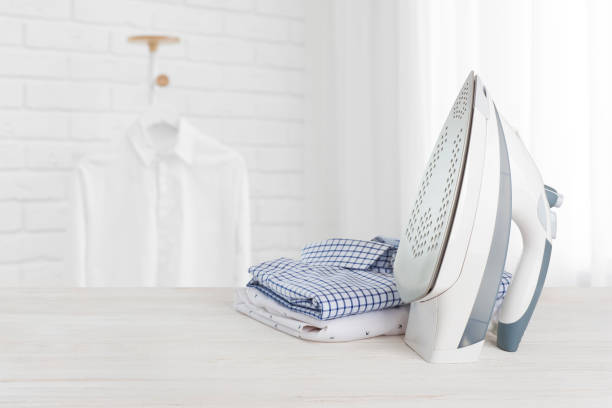How to Iron Clothes
How to properly iron a blouse
Begin with the neck, cuffs, and sleeves and work your way down the body of the garment. Then go on to more significant parts, such as the back and front of the house. Remember to keep the details on your shirts, such as frills and pleats, for last. Use the iron tip to flatten the piece in small parts at a time using a circular motion.
Don’t iron over buttons or zippers unless necessary. Some plastic buttons will melt if they are placed near a hot iron.
Do not use an iron as well…
Corduroy, suede, velvet, fur, imitation fur, and other hairy fabrics are recommended because the material will lay flat when dry. Instead of boiling water, use a steamer. It is also essential not to iron the acetate lining of skirts and dresses, as this will also cause the fabric to melt.
How to properly iron a shirt
After dampening the shirt, begin by ironing the collar from the underside up to the top. Iron the cuffs first, followed by the sleeves. Place the shirt shoulder on the end of an ironing board and iron the shoulder and a portion of the back of the shirt. Iron the front of the shirt from the underside up until it is wrinkle-free. After that, iron the back. If necessary, iron on the collar and cuffs a second time. If your shirt is still looking shabby, a spritz of starch may be required to bring it back to life. Spray starch is available for purchase.
How to keep clothes wrinkle-free after ironing
Hang your garment on a hanger and allow it to cool completely without being disturbed. Keep the clothing on a hanger in the closet until you need it.
Teflon-coated covers vs silicone-coated covers.
These are ironing board coverings, which are available in various sizes. A Teflon-coated surface will retain heat for a more extended period, while a silicone-covered cover is intended to be smoother. Plain cotton coverings, on the other hand, work nicely on their own.
Do I need an ironing board?
Ironing boards are only helpful if you do a lot of regular ironing because they save you a lot of muscle strain. However, if you only need to iron garments for a particular occasion, ironing on your bed or a table covered with a bed sheet is an acceptable practice.
Are there any shortcuts to ironing the curvy parts?
There is, in fact, something there. Use a steamer to smooth down the curved areas. The wrinkles will come out more quickly if you tug on the fabric while still damp and heated. Iron the significant areas of your clothes, such as the front and back, to give them a more polished appearance.
How to clean an iron?
Occasionally, a hot iron will melt something and leave goo on the surface of the plate. If you don’t wipe the container after every usage, it will stain your clothes over time. Heat the iron to a high temperature. Whatever was trapped there will be melted by the heat. Locate a rag and use it to wipe the iron plate down. Don’t wipe the container with your hand after wiping it with the rag.
Different Ways For Ironing Clothes.
Ironing woollen clothing
The fact that wool is a natural fabric means that if it becomes wrinkled, simply hanging the garment will be sufficient to de-wrinkle it. Nonetheless, if the garment is badly crumpled, ironing may be necessary. When ironing woollen clothing, it is always preferable to use a steam iron. If you do not have access to one, a substitute would be to soak a white cotton towel and squeeze out most of the water before using it to give moisture when ironing. Turning the garment inside out and ironing it on the inside can help avoid any shine due to the ironing.
Ironing cotton clothing
Generally speaking, clothes made entirely of cotton are prone to being wrinkled. The most effective method of getting rid of wrinkles is to iron them. To avoid any finish from being taken from the cotton fabric, ensure that the clothing is ironed inside before folding them. Never iron over stains because doing so can lead them to become permanent in some instances.
Ironing polyester clothing
The wrinkling resistance of polyester, like wool, means that it is rarely needed to be ironed in most cases. However, if necessary, a low-temperature iron might be used on a delicate surface. High temperatures may cause the material to become scorched if it is misused.
Ironing velvet clothing
It is never recommended to iron velvet garments. The wrinkles that have formed in the velvet should be removed by steaming the fabric.
Following these simple instructions will allow you to iron your garments to perfection.

